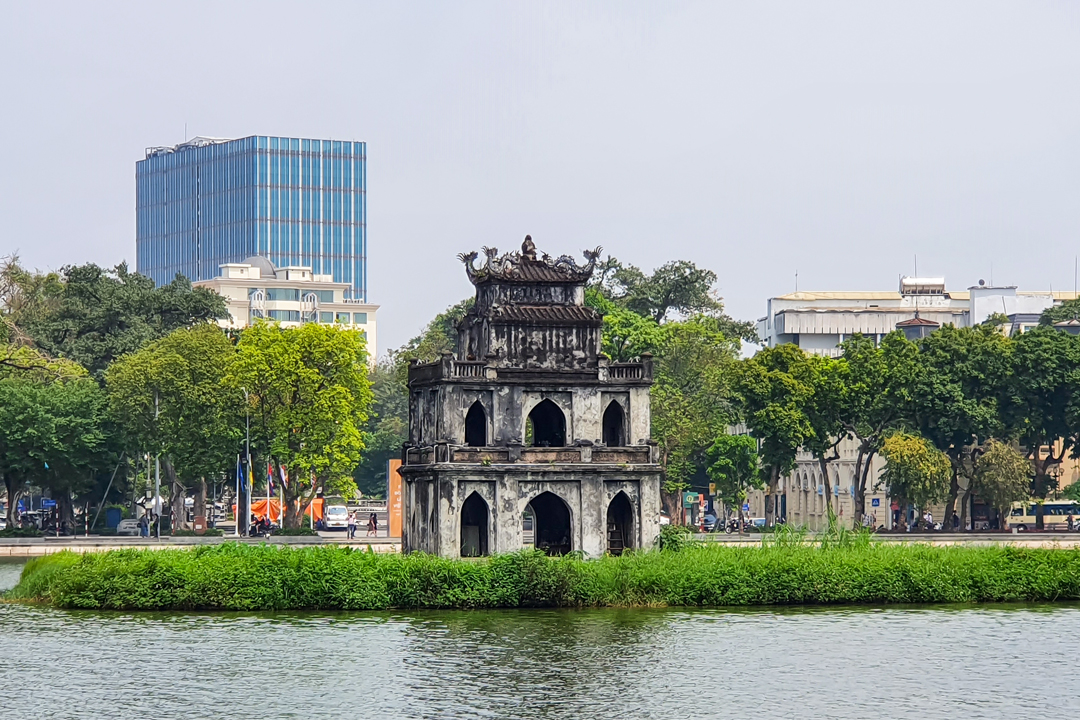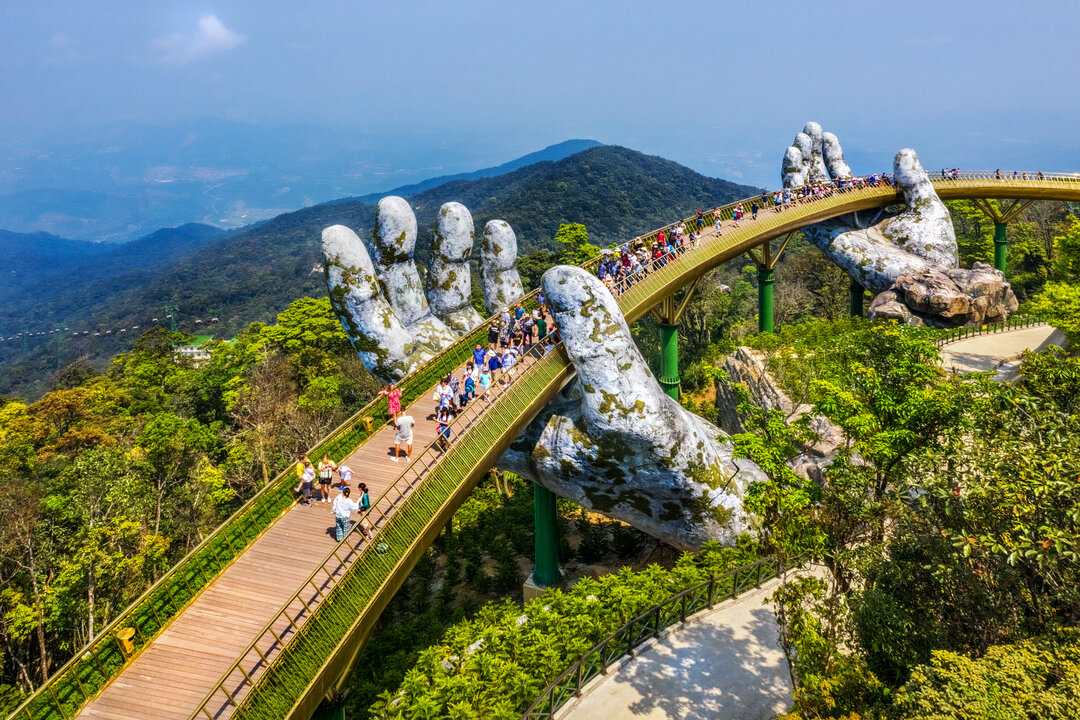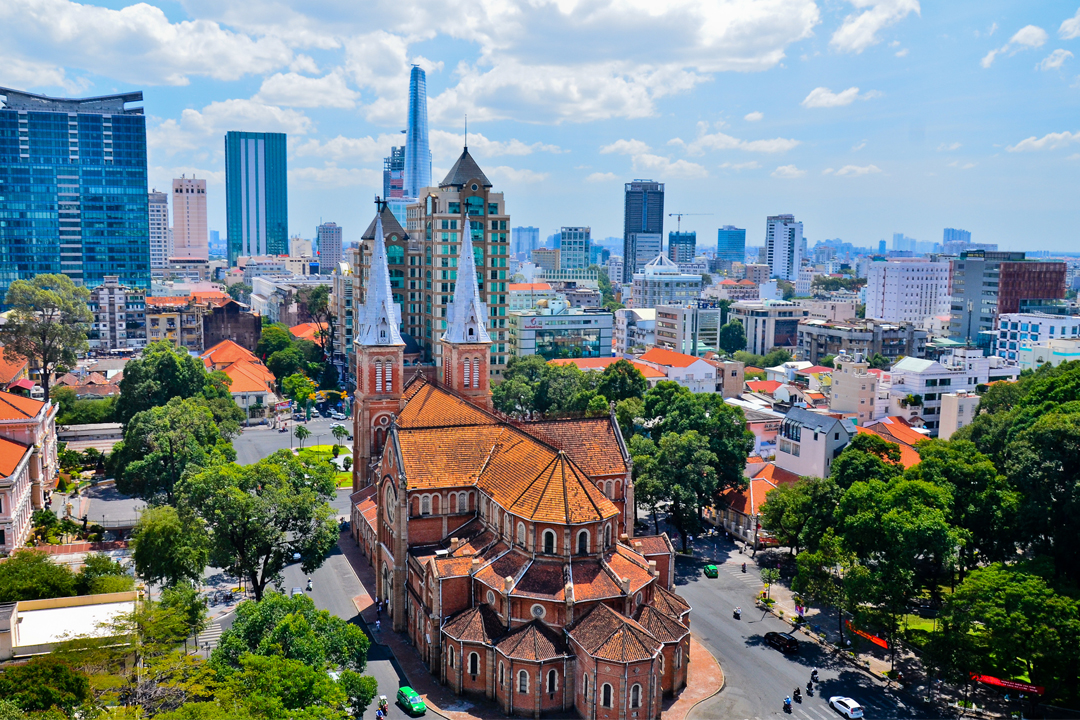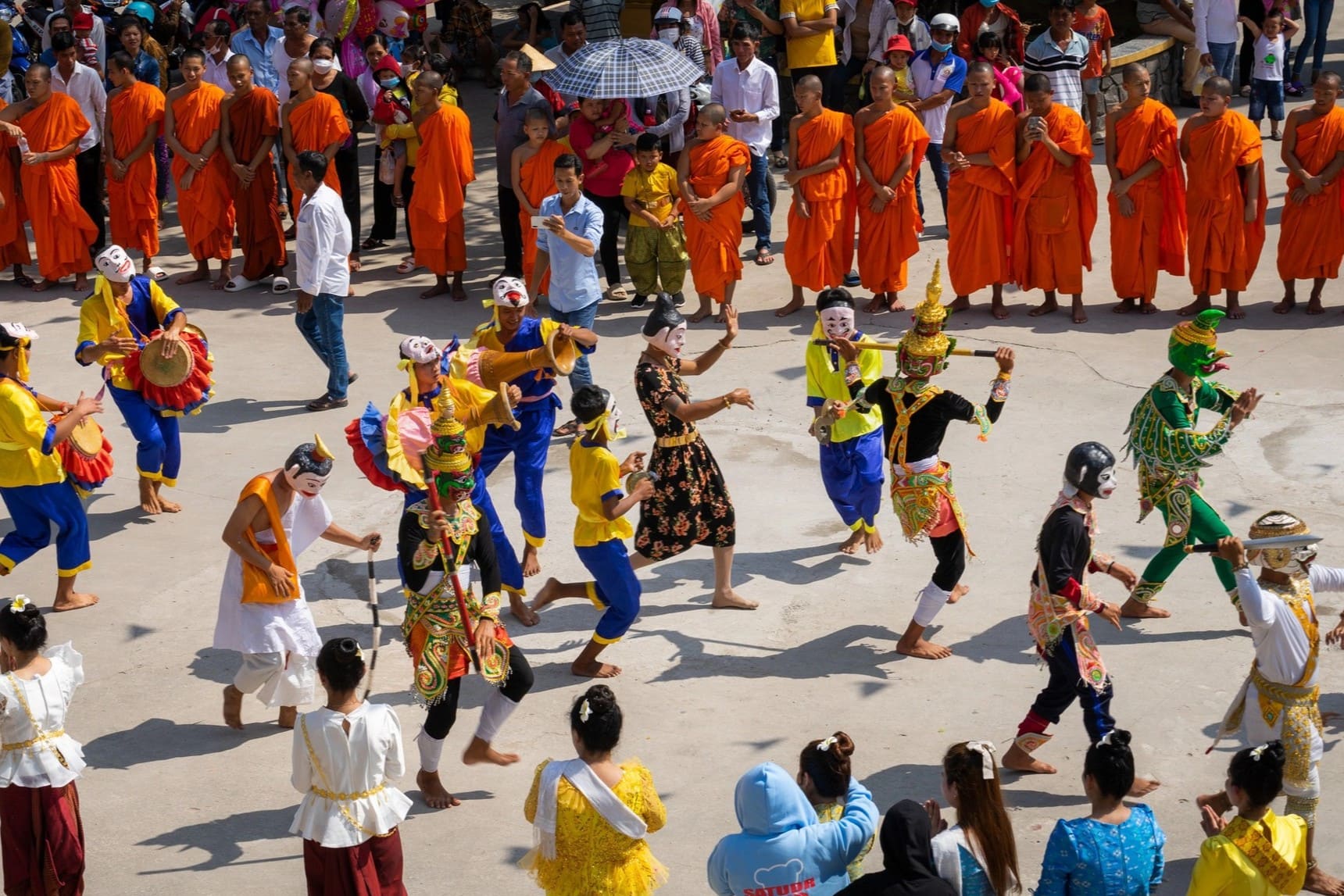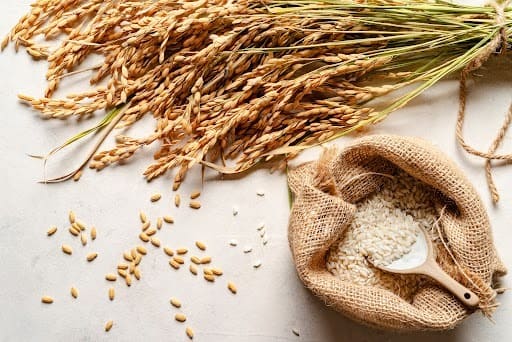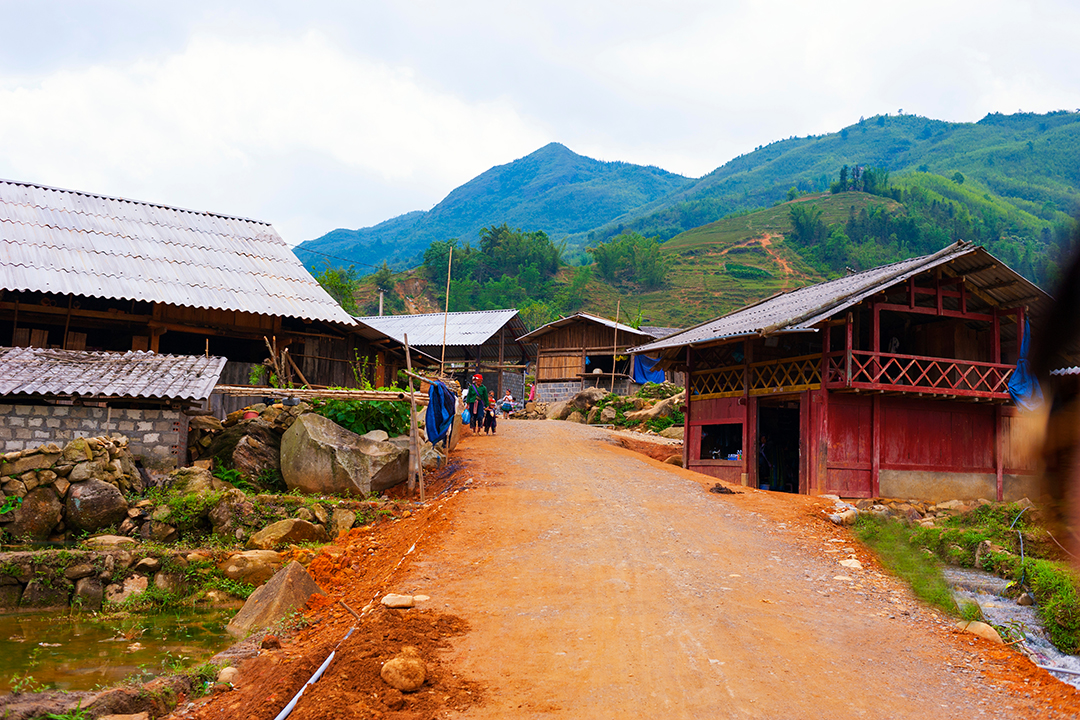Co Thon Village: Overview, Things to Do & Travel Guide
Just 2 kilometers North of Buon Ma Thuot, Co Thon Village is a living museum of the Ede people, preserving centuries-old traditions in Vietnam’s Central Highlands. Despite modernization, the village preserves its matriarchal society, stilt houses, and rare indigenous customs.
Co Thon Village showcases a seamless blend of heritage and daily life, from the detailed craftsmanship of Ede communal homes to the captivating rhythms of gong culture. But beyond its cultural charm, the village also stands as a model for ecotourism and sustainable travel, balancing tradition with responsible development.
So, what makes Co Thon unique compared to other ethnic villages in Vietnam? And how has it resisted the tide of change while embracing a future in cultural tourism? Let’s explore the stories and customs that make this village a good destination.
Introduction to Co Thon Village
Co Thon Village is located in Tan Loi Ward, Buon Ma Thuot City, Dak Lak Province. Also known as Ako Dhong, this village is one of the last strongholds of Ede culture in Vietnam’s Central Highlands. Covering an area of over 62 hectares, the village is home to 247 households with a total population of 1,004 people, including 64 Ede households with 317 residents. It serves as a living testament to the traditions and architectural heritage of the Ede ethnic group. Despite the urban expansion, Co Thon has remarkably preserved its long stilt houses, communal way of life, and unique matriarchal societal structure. (Note: The number of households was updated in August 2024)
Unlike many other ethnic minority villages undergoing rapid modernization, Co Thon maintains a strong connection to its cultural roots. The village features 32 long stilt houses, constructed from wood with tiled roofs, slanted walls, and distinctive pointed roofs extending forward. These houses are arranged along both sides of the road in a north-south direction, creating a characteristic landscape of the Central Highlands villages. For the Ede, longhouses are more than shelters they are sacred symbols, binding the community and preserving traditions across generations.
Rows of well-preserved Ede longhouses, each accommodating multiple generations greet visitors to the village. The village’s location near Ea Nuol Stream further enhances its serene and picturesque setting, making it a key destination for cultural tourism.
As a cultural hub, the village plays a significant role in showcasing Ede heritage to both domestic and international visitors. Some defining characteristics include:
- Long stilt houses - Constructed from natural materials like wood and bamboo, these houses accommodate multiple generations under one roof.
- Matriarchal social structure - Women inherit property and hold authority in family decisions.
- Gong culture - Music and dance play an integral role in community rituals and festivals.
- Eco-tourism - Visitors can experience an authentic Ede lifestyle through guided tours and homestays.
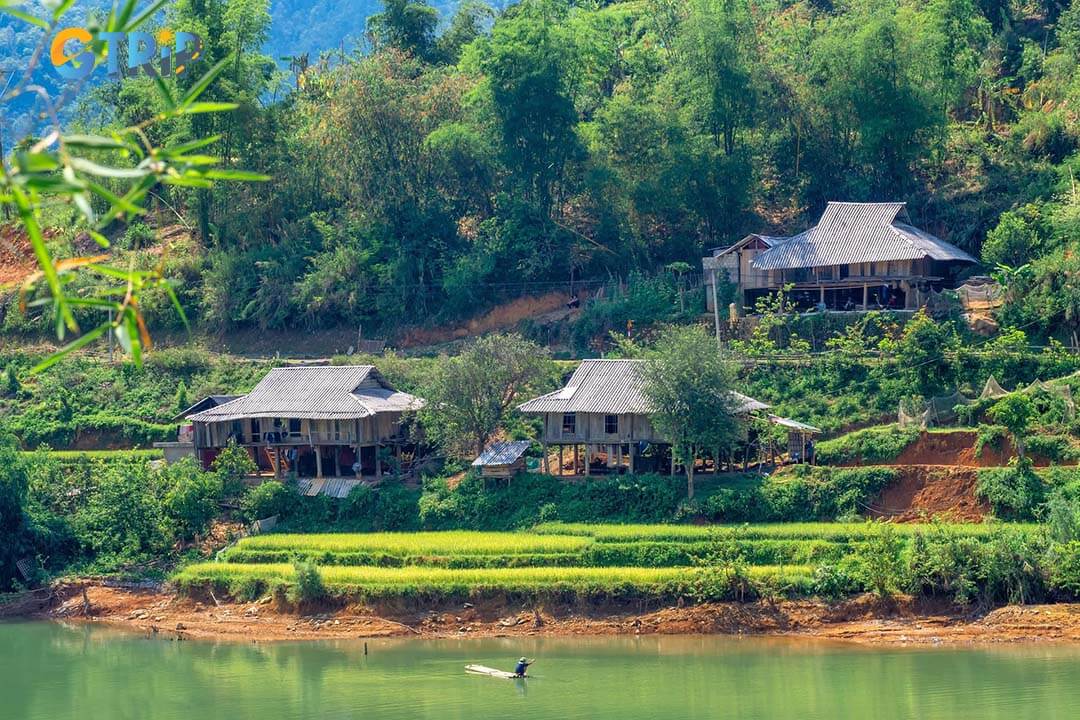
Co Thon Village is a well-preserved cultural hub of the Ede people, featuring long stilt houses, a matriarchal society, and a deep connection to Central Highlands heritage
Why is Co Thon Village also called Ako Dhong?
The name "Ako Dhong" originates from the Ede language, meaning “upstream valley”. This name reflects the village’s geographical position near the Ea Nuol Stream, which has historically been a vital water source for agriculture and daily life. Unlike many Ede villages that were relocated or modernized over time, Ako Dhong retains its indigenous identity through cultural practices and long stilt houses.
The village was initially settled by Ama H’Rin, a respected Ede leader, in the mid-20th century. Under his leadership, Co Thon was developed as a model village that balances tradition with sustainable development, ensuring that Ede customs continue to thrive.
Co Thon Village, has a rich and complex history deeply tied to the broader history of the Ede people in Vietnam’s Central Highlands. Once a small settlement, it has grown into a cultural hub where Ede traditions are preserved and shared with visitors.
Historical Background of Co Thon Village
Co Thon Village, also known as Ako Dhong, has a rich and complex history deeply tied to the broader history of the Ede people in Vietnam’s Central Highlands.
Formation and early development (1954-1975)
Co Thon Village, later known as Ako Dhong, was founded in the mid-20th century. After the Geneva Agreement in 1954, five French missionaries arrived in Buon Ma Thuot. In 1956, with the help of Y-Bun Sur, a Mnong Rlam student, they secured a 450,000 m² land grant. Y-Bun Sur gathered laborers, including Y-Diem Nie (Ama H’Rin), an Ede man, to develop the land. By 1960, the first longhouse was built, marking the village’s growth. In 1964, it was officially established as Saint Benoit Plantation. The return of two missionaries in 1966 further shaped its cultural and religious life.
During the Vietnam War, longhouses were adapted for fire protection. In 1968, Ama H’Rin stepped down, and Y-Dhiang Eban (Ama Y-Blap) became village chief. The village was renamed Ako Dhong as Ama H’Rin expanded it across the Ea Nuol Stream. By 1975, more longhouses had been built, and a cooperative economic model had improved living standards, solidifying the village as a resilient cultural landmark.
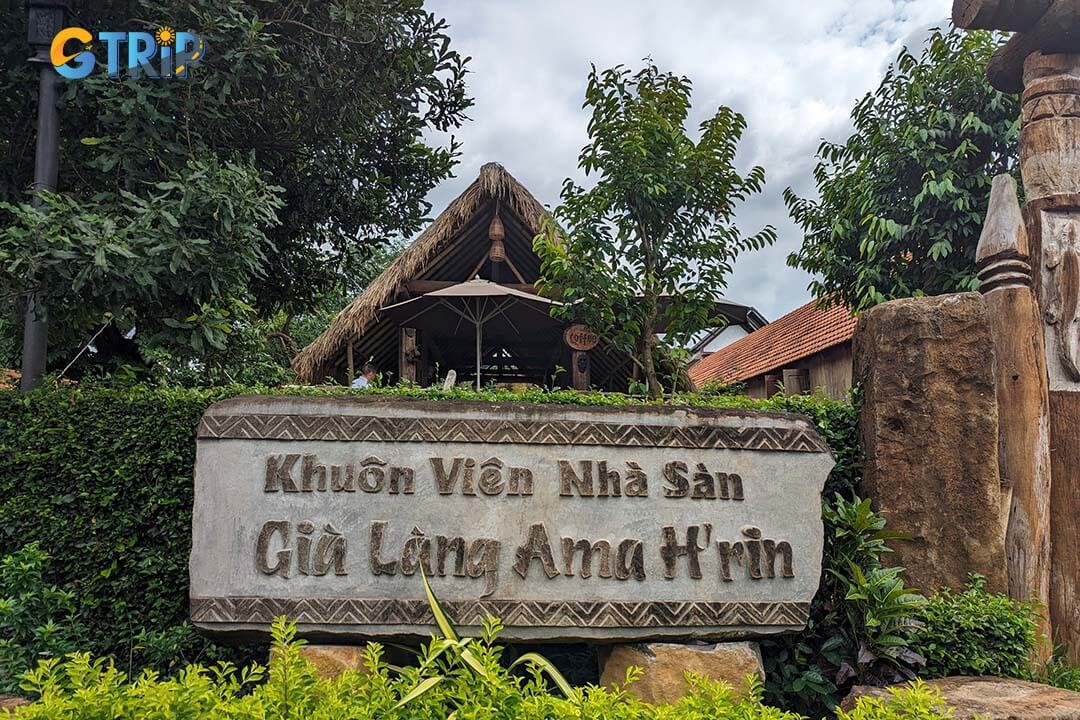
Co Thon Village, later known as Ako Dhong, was founded in the mid-20th century and has since evolved into a resilient cultural landmark of the Ede people
Post-1975 transformation and cultural preservation
After Vietnam’s reunification in 1975, the withdrawal of foreign institutions led to financial hardship, causing many families to leave, except for Ama H’Rin’s extended family. In response, the government introduced settlement policies, improving infrastructure and livelihoods. By 1986, the collective coffee plantation was dissolved, and land was redistributed to households. Ama H’Rin played a key role in securing trade agreements, ensuring economic stability. In 2009, the village eradicated poverty and was recognized as a "Cultural Village" for seven consecutive years. By 2012, it was acknowledged as a model village for preserving traditional Ede longhouses.
Present-day significance
Co Thon Village preserves Ede traditions, featuring longhouses, a matriarchal society, and a rich cultural heritage, making it a key cultural tourism destination. However, economic pressures have led to the gradual disappearance of intangible cultural values, and some long-stilt houses have been replaced. Today, Ako Dhong serves as a unique bridge between the past and the present, offering you an immersive experience of Ede culture while highlighting the resilience of its people.
Architectural significance of Co Thon Village
Co Thon Village stands as a remarkable testament to the architectural ingenuity and cultural heritage of the Ede ethnic group. Situated in Buon Ma Thuot City, it showcases a unique building tradition that extends beyond practicality, embodying the Ede people's societal structure, spiritual beliefs, and deep connection with nature. The village’s long stilt houses serve as homes and as enduring cultural symbols that reflect communal living and matriarchal heritage.
The unique design of Ede long stilt houses
A defining architectural feature of Co Thon Village is the Ede long stilt house, a structure developed over centuries to adapt to the Central Highlands' environment. These houses, often reaching up to 30 meters in length, accommodate multiple generations under one roof. Built from wood, bamboo, and thatched roofing, they are elevated on stilts to protect against flooding and wild animals. The interior follows a matriarchal layout, with designated spaces for communal activities and ceremonies, reinforcing social and cultural traditions.
Key architectural characteristics
- Elevated structure: Raised 1.5 to 2 meters above the ground, these houses offer protection from flooding, pests, and provide storage and livestock shelter beneath.
- Elongated layout: The house’s length symbolizes the family's prosperity longer houses indicate wealth and status.
- Separate living zones: The front serves as a communal space for guests and ceremonies, while the rear remains a private family area.
- Symbolic entrance: Traditionally, two ladders lead into the home one for men and one for women with the women’s intricately carved ladder emphasizing the household’s matriarchal lineage.
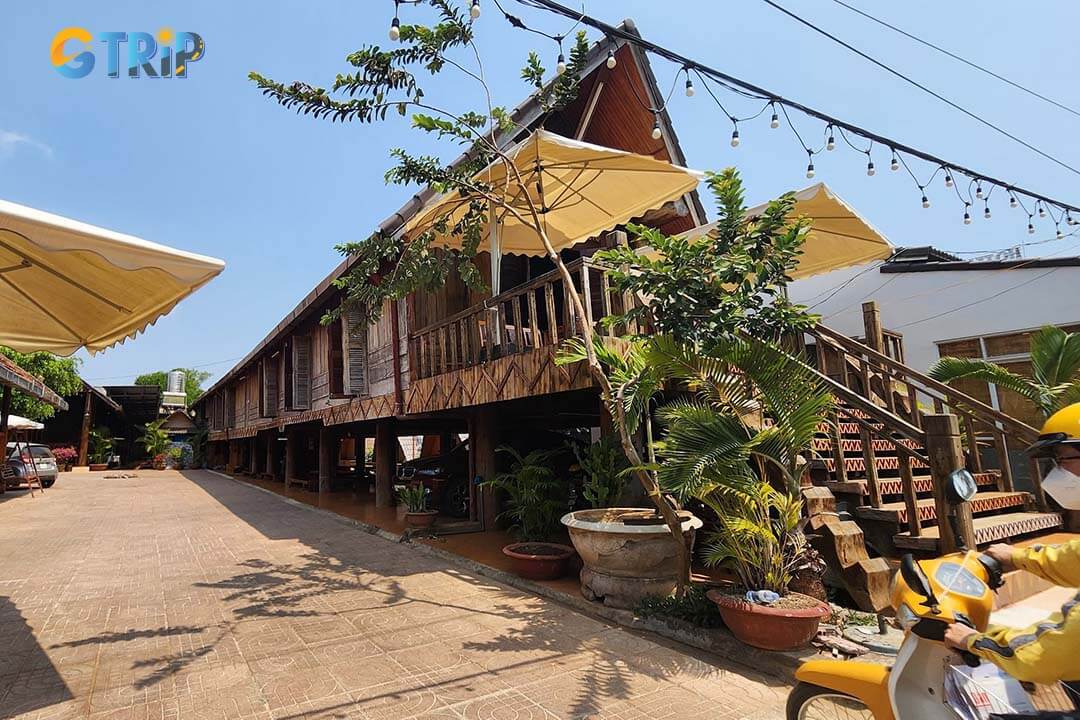
Co Thon Village is distinguished by its traditional Ede long stilt houses, designed for multi-generational living and adapted to the Central Highlands' environment
These architectural choices reflect the practical needs of the Ede people while reinforcing their customs and social hierarchy. Beyond functionality, the longhouses serve as cultural landmarks, preserving ancestral traditions and fostering a strong community identity.
Symbolism in Ede architecture
Every aspect of the Ede long stilt house holds symbolic meaning, illustrating the villagers' cultural and spiritual values:
- Matriarchal influence: The eldest woman heads the household, and her role is reflected in the home’s structure. The largest room is often reserved for her, highlighting her importance in decision-making and heritage preservation.
- Spiritual elements: Many homes include a space for storing gongs and musical instruments, which play a vital role in ceremonies and communal gatherings.
- Nature-inspired motifs: Carvings of elephants, birds, and other animals on doors and pillars reflect the Ede people's reverence for nature.
- Communal living philosophy: The open space at the front encourages social interaction, reinforcing the collective bonds essential to Ede society.
The architecture of Co Thon Village is more than just shelter it serves as a vessel for cultural storytelling, continuity, and identity. Every structural element and carved detail carries the Ede people's history, beliefs, and traditions.
Construction materials and techniques
The materials and construction methods used in Co Thon Village highlight the Ede people's sustainable approach to architecture, relying on locally sourced, renewable resources.
Traditional materials
- Bamboo and rattan: Used for walls and partitions, these materials provide flexibility and ventilation, ideal for the region’s tropical climate.
- Ironwood and teakwood: Selected for their durability and resistance to termites, these woods form the structural pillars and beams.
- Palm leaves and thatched roofs: These natural materials offer insulation, keeping interiors cool in the summer and protecting against heavy rains.
Building techniques
- Interlocking joinery: Instead of nails, wooden joinery techniques enhance durability while allowing slight movement, essential for the shifting soils of the Central Highlands.
- Elevated construction: The stilt design improves ventilation, preventing dampness and promoting air circulation.
- Handcrafted elements: Skilled artisans use ancestral knowledge to build each house, ensuring authenticity and high-quality craftsmanship.
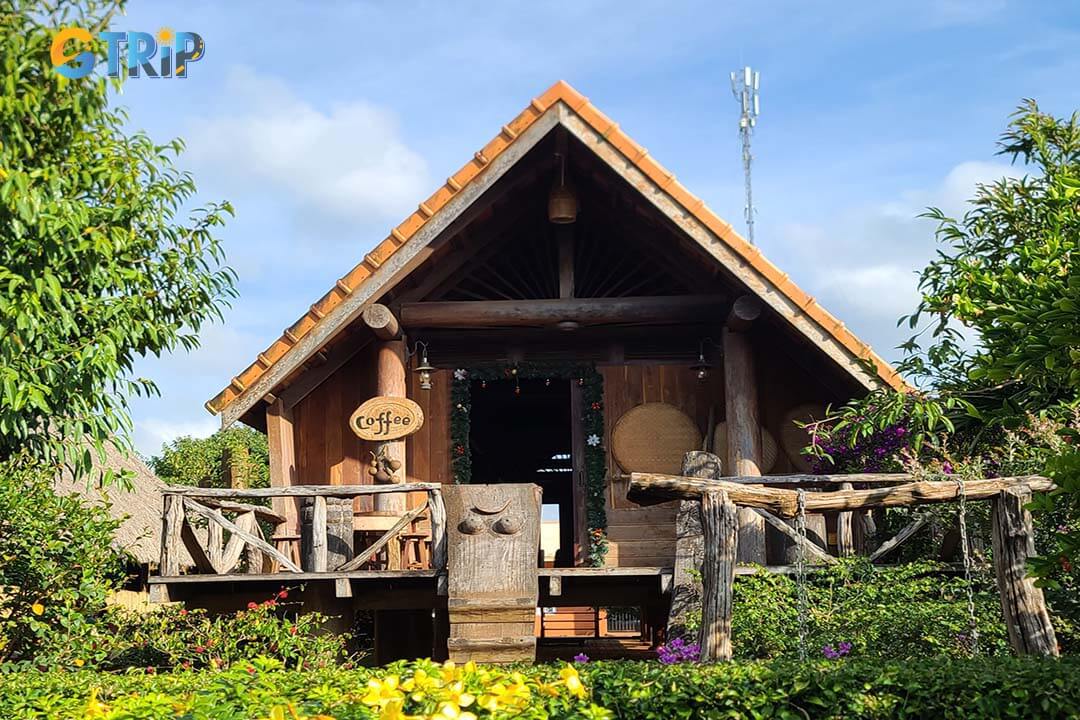
Co Thon Village’s Ede houses feature sustainable materials like bamboo, ironwood, and thatched roofs, reflecting expert craftsmanship and eco-friendly design
The architectural heritage of Co Thon Village reflects the resilience, adaptability, and cultural depth of the Ede people. These long stilt houses are more than physical structures they are living cultural monuments, safeguarding traditions and embodying the ingenuity of the Ede ethnic group. As modernization challenges indigenous traditions, Co Thon Village remains a crucial link between past and future, preserving the Ede legacy for generations to come.
4 things to do in Co Thon Village
Co Thon Village is a cultural gem in Buon Ma Thuot, offering visitors an immersive experience of the traditions of the Ede ethnic group. Unlike other tourist destinations in Vietnam, Co Thon is not just about sightseeing - it's about engaging with an authentic, living culture. Experiencing traditional crafts or spending a night in an Ede long stilt house immerses you in the heart of the Central Highlands.
1. Experiencing traditional handicrafts in Co Thon Village
Co Thon Village is a living museum of Ede craftsmanship, where traditional handicrafts are preserved but actively practiced in daily life. These time-honored skills passed down through generations, reflect the Ede people's deep connection to nature, spirituality, and self-sufficiency. You can observe, learn, and participate in crafting handmade goods, gaining firsthand appreciation for the artistry involved.
Experiencing traditional brocade weaving
One of the most significant and highly skilled crafts in Ede culture is brocade weaving. This centuries-old practice is more than just fabric-making - it is an art form that tells stories through intricate patterns and vibrant colors.
Ede women are the primary weavers, using handlooms to create richly textured fabrics adorned with geometric patterns and symbolic motifs inspired by nature, folklore, and spirituality. Each pattern has its meaning, often representing mountains, rivers, the sun, or animals that are important in Ede mythology. Unlike modern textiles, these brocade pieces are made entirely by hand, with organic cotton fibers dyed using natural extracts from leaves, tree bark, and seeds.
The process of weaving det tho cam is labor-intensive, requiring both skill and patience. Some intricate designs can take weeks or even months to complete, making each woven piece a unique and treasured cultural artifact. Traditionally used for clothing and ceremonies, these textiles are now crafted into souvenirs like handbags, wallets, and decor.
You can observe weaving, learn pattern meanings, and try weaving with Ede artisans. Purchasing a piece of det tho cam directly from the weavers is also a wonderful way to support the preservation of this valuable cultural tradition.
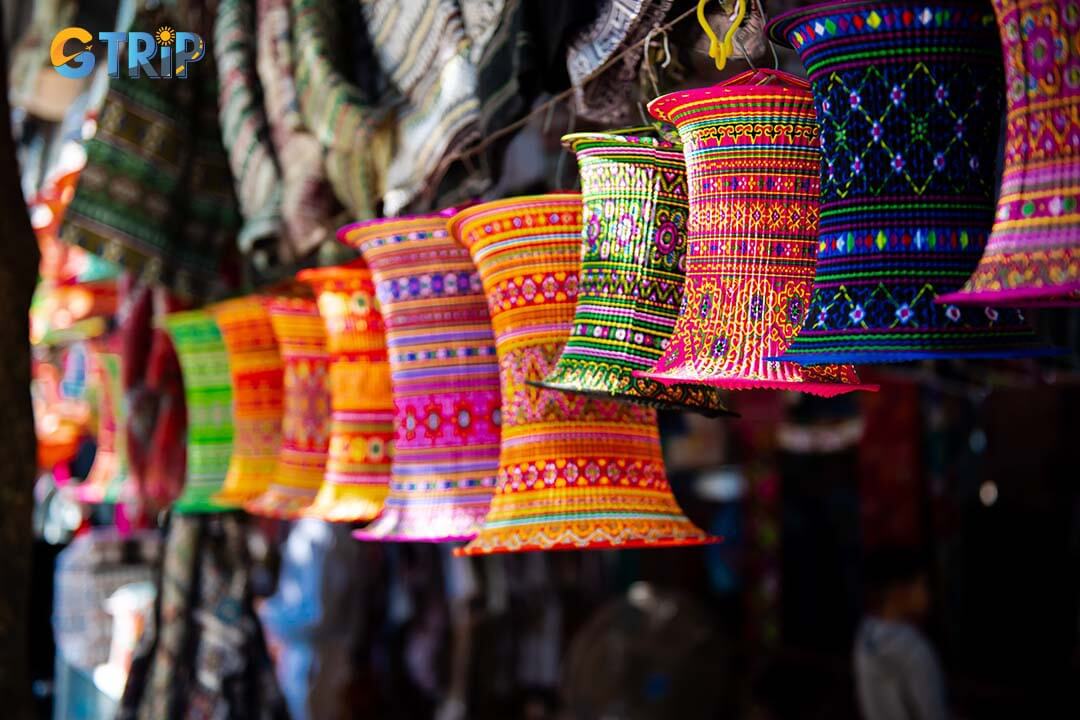
Ede brocade weaving is a centuries-old craft where women create intricate, handwoven textiles using natural dyes and symbolic patterns inspired by nature
Bamboo and rattan weaving: A sustainable craft
Beyond textiles, bamboo and rattan weaving is another essential craft in Co Thon Village. Using materials harvested from the Central Highlands, Ede artisans create a wide variety of functional and decorative objects, such as:
- Baskets - used for carrying crops, storing food, and everyday tasks.
- Sleeping Mats - Essential household items in long stilt houses.
- Trays and Kitchenware - Used for food preparation and communal meals.
Each item is crafted using traditional techniques, ensuring durability and sustainability. Handcrafted from renewable materials, these eco-friendly pieces reflect the Ede people's deep respect for nature.
Join a traditional handicraft workshop
For those seeking a truly immersive cultural experience, Co Thon Village offers interactive handicraft workshops, where visitors can:
- Learn ancient weaving techniques from local artisans.
- Create their woven souvenir, such as a small basket or fabric piece.
- Gain insight into the spiritual and cultural significance behind each craft.
The experience is best enjoyed with a cup of Dak Lak’s famous Robusta coffee, allowing guests to relax and appreciate the beauty of handmade traditions in a peaceful village setting. By participating in these workshops, visitors not only create lasting memories but also help preserve Ede's cultural heritage for future generations.
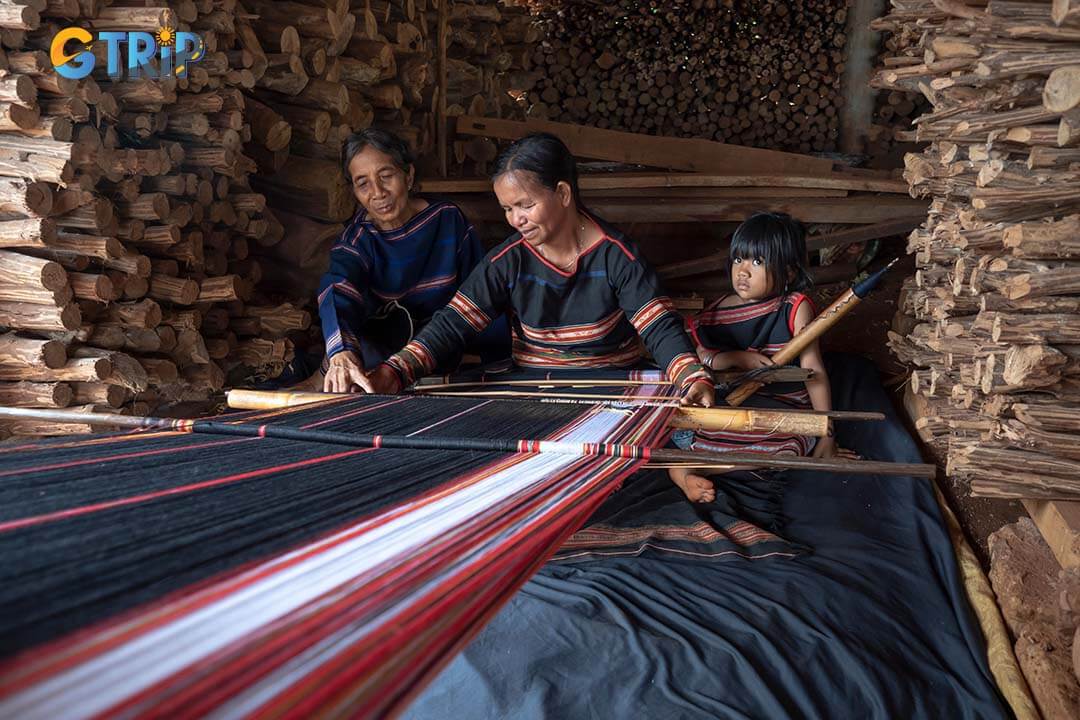
Experience Ede culture firsthand at Co Thon Village through interactive handicraft workshops, where you can learn traditional weaving, create your own souvenir
2. Participate in traditional performances with Gong music
Gong music is a vital cultural tradition of Vietnam’s Central Highlands, and Co Thon Village offers an authentic setting to experience its profound significance. Recognized by UNESCO as an Intangible Cultural Heritage, gong music is an art form and a sacred means of communication with the spiritual world, deeply rooted in Ede customs.
The powerful, rhythmic sounds of gongs play a central role in ceremonies, festivals, and communal gatherings, symbolizing life, nature, and ancestral connections. Typically performed in ensembles, the music creates a mesmerizing atmosphere, often accompanied by traditional Ede dances, storytelling, and rituals.
While gong performances are integral to major village events like harvest festivals and weddings, visitors can also arrange private showcases to witness this ancient tradition up close. Village elders, who have preserved this heritage for generations, share the history behind each piece and its cultural significance. For a hands-on experience, guests may even try playing the gongs under the guidance of skilled performers, gaining a deeper appreciation for this unique art form.
To enrich the experience, performances are often paired with local delicacies and the region’s renowned Dak Lak coffee. As the resonant beats of the gongs fill the air, visitors can savor a cup of aromatic Robusta coffee, fully immersing themselves in the rich cultural spirit of the Ede people.
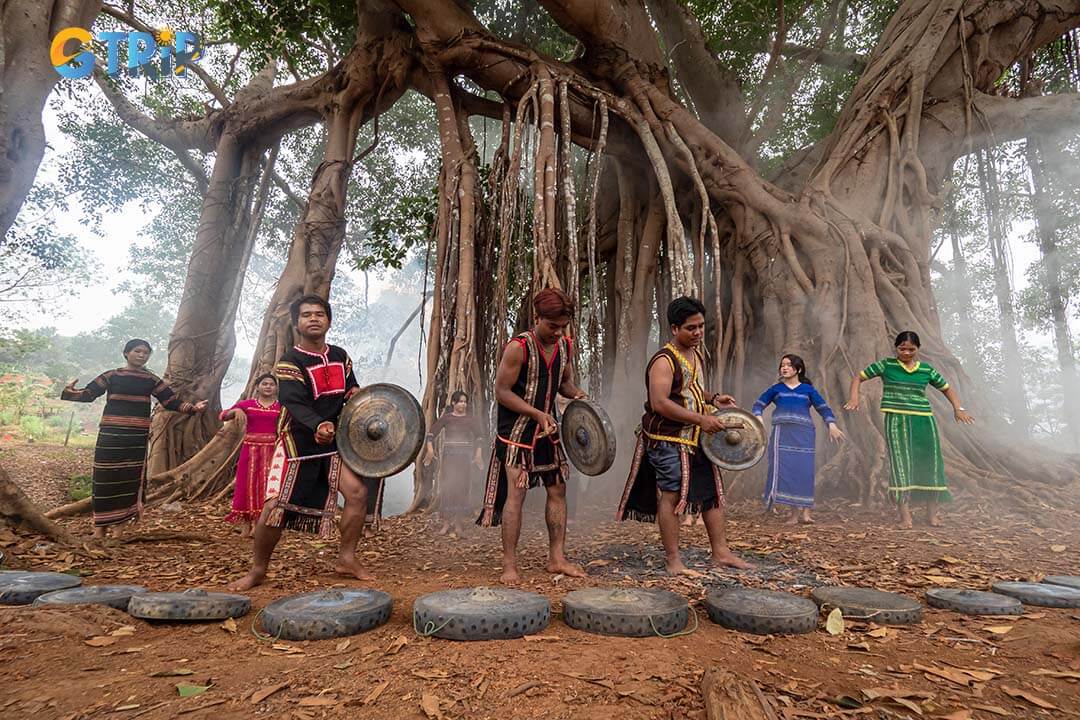
Experience the UNESCO-recognized gong music of Co Thon Village, where rhythmic beats and traditional dances bring Ede heritage to life
3. Check-in at an Ede long stilt house
A visit to Co Thon Village is incomplete without stepping inside an Ede long stilt house, an architectural symbol of the village’s matriarchal traditions and communal lifestyle. Built from wood and bamboo, these houses can extend up to 30 meters, accommodating multiple generations under one roof. Raised on stilts, they protect against flooding and wild animals while ensuring ventilation in the tropical climate.
Each house showcases intricate carvings, buffalo horn motifs for prosperity, and a ceremonial ladder honoring women and elders in Ede’s matriarchal society. You can admire these remarkable structures, learn about their cultural significance, and capture stunning photos. The experience is enriched by the village’s warm hospitality, traditional performances, and the rich aroma of Dak Lak’s famous coffee, making it a must-visit destination in the Central Highlands.
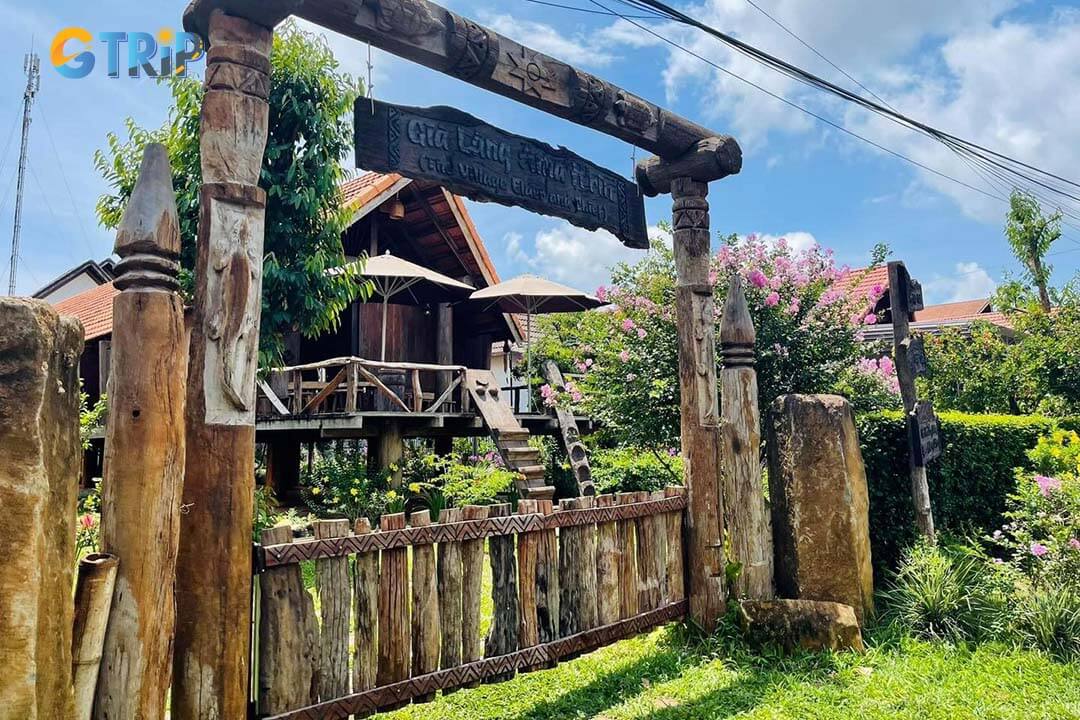
Step inside an Ede long stilt house in Co Thon Village to experience its unique matriarchal traditions, intricate carvings, and communal heritage
4. Enjoy Ede people’s cuisine specialties
Food is a crucial aspect of any cultural journey, and Co Thon Village offers a chance to taste the unique flavors of Ede cuisine. Unlike the widely known dishes of Vietnam, Ede cuisine incorporates locally sourced ingredients, often cooked over an open fire.
Ga nuong com lam (Grilled chicken with bamboo sticky rice)
A signature dish of the Central Highlands, ga nuong com lam showcases Ede culinary traditions with simple yet rich flavors. Free-range chicken is marinated with wild pepper, lemongrass, galangal, and mac khen, then slow-grilled over charcoal for crispy skin and juicy, smoky meat.
Paired with it is com lam (bamboo sticky rice), glutinous rice soaked in coconut milk or spring water, packed into bamboo tubes, and roasted over an open fire, absorbing a delicate bamboo aroma. Served with salt-sesame dip or fermented chili paste, this dish is a must-try for an authentic taste of Ede cuisine.
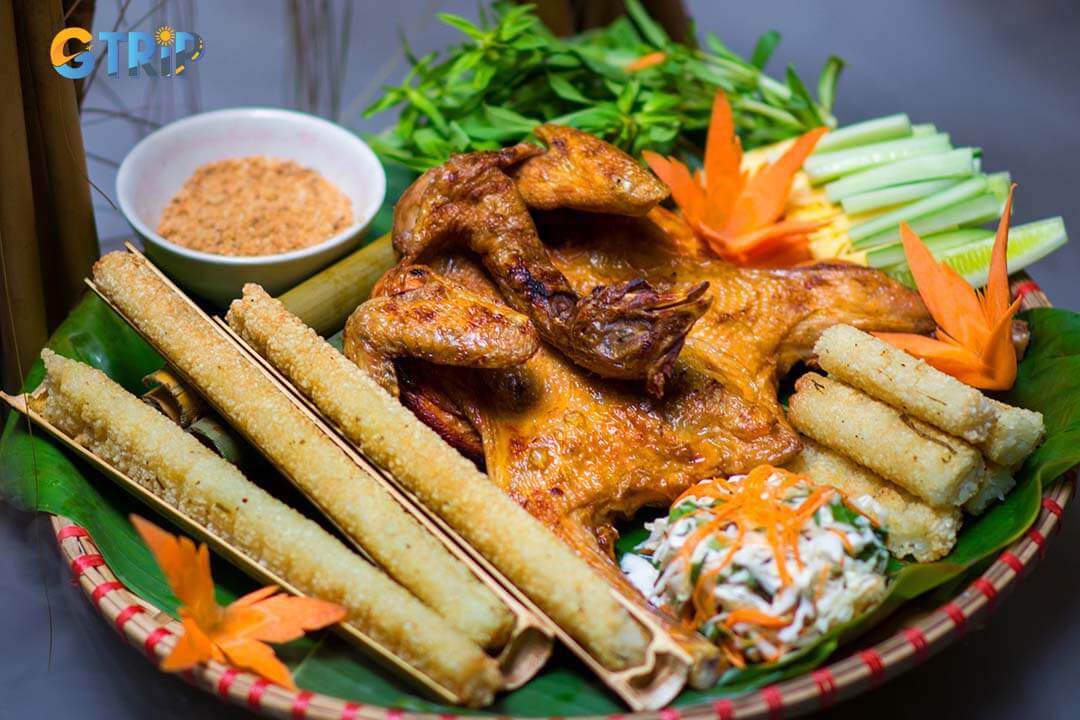
Ga nuong com lam, a signature Ede dish, features charcoal-grilled chicken with aromatic spices, paired with bamboo-cooked sticky rice for a smoky, authentic flavor
Ruou can or can wine (Ede traditional fermented rice wine)
No visit to Co Thon Village is complete without tasting Can Wine, a traditional Ede rice wine fermented using sticky rice, tree bark, and special herbs. What makes this drink unique is the communal way it is consumed - the wine is stored in a large earthen jar, and people drink it together using long bamboo straws.
Ruou can has a sweet, mildly alcoholic taste and is often enjoyed during festivals, weddings, and special celebrations. It is a drink but a symbol of unity and hospitality in Ede culture. Visitors who partake in a Can Wine ceremony are welcomed as honored guests, making it a truly immersive cultural experience.
Canh thut dot may or Rattan (Wild vegetable and river fish soup)
Canh thut is a long-standing dish of the Ede people and other indigenous ethnic groups in Dak Lak Province. This rustic yet flavorful soup is made by combining wild vegetables such as “bep leave” (one wild vegetable also known as “nhip leave”), young rattan shoots, and bitter eggplant with freshwater fish, creating a dish rich in local flavors.
The name "canh thut" comes from its traditional cooking method. In the past, when people worked in the forest, they would prepare the soup inside bamboo or rattan tubes found in the wild. While cooking, they would use chopsticks to stir the ingredients until they softened, which led to the name "thut" (meaning to push or stir).
Today, Canh Thut includes more than its traditional ingredients, with additions like pork intestines, ribs, and canned fish enhancing its flavor. These additions enhance the dish’s flavors, making it even more appealing while preserving its deep-rooted cultural significance.
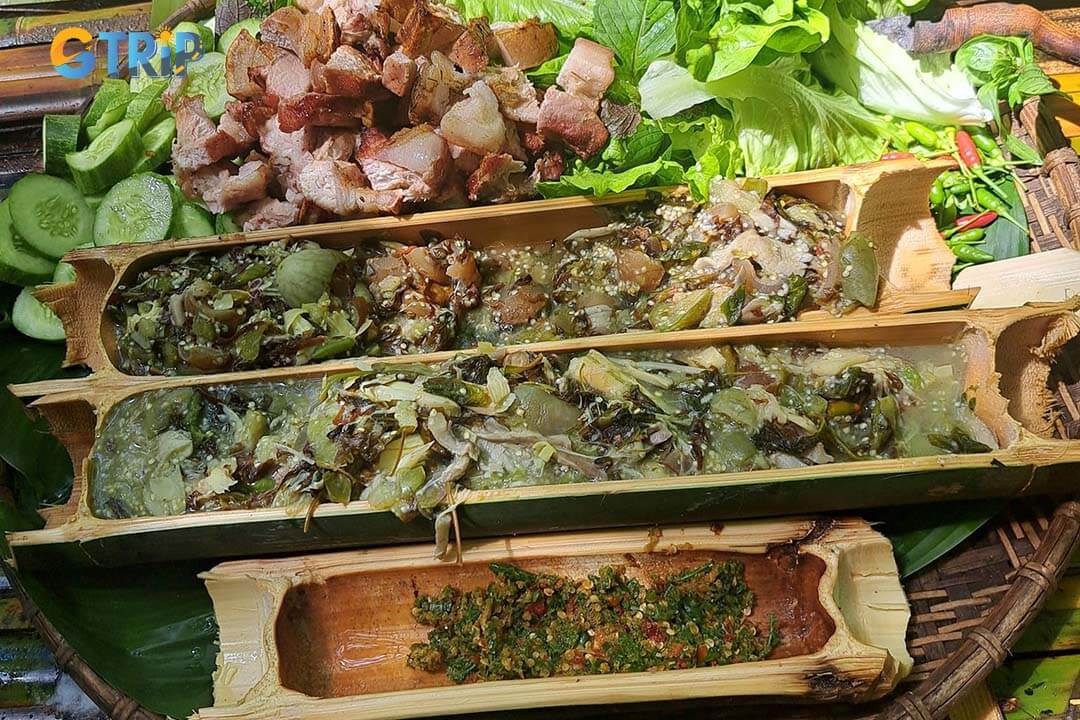
Canh thut, a traditional Ede soup, blends wild vegetables, rattan shoots, and freshwater fish, cooked in bamboo for a rich, earthy flavor
When is the best time to visit Co Thon Village?
Co Thon Village welcomes visitors year-round, but choosing the right season can greatly enhance your experience. The region has two distinct seasons: the dry season (November to April) offering unique landscapes and travel conditions.
The dry season is the most popular time to visit, especially from November to February, when the weather is cooler, skies are clear, and outdoor activities are more enjoyable. This is the perfect time to explore Ede culture, participate in traditional festivals, and capture the village’s beauty in stunning photographs. The pleasant climate also makes it easier to cycle around the village, visit local coffee farms, and experience cultural performances without the inconvenience of rain.
Entry fees & guidelines for visitors
When visiting Co Thon Village, keep in mind a few important guidelines to ensure a respectful and enriching experience. Entry is free, but donations are appreciated to support cultural preservation. The village is open at all times, allowing visitors to explore at their own pace.
As this is a culturally significant site, wearing respectful clothing is essential. Additionally, always ask for permission before entering traditional long stilt houses or taking photos of residents to show respect for local customs and traditions.
How to get to Co Thon Village?
Co Thon Village is a cultural gem of the Ede ethnic group, located just 2 kilometers North of Buon Ma Thuot City. Due to its proximity to the city center, reaching the village is relatively straightforward, with multiple transport options available. However, to ensure a smooth journey, understanding the best routes, available transport modes, and essential travel tips is crucial.
Apologies for any confusion in the previous information. Upon re-evaluating the transportation options and associated costs to Co Thon Village near Buon Ma Thuot City, we have updated the details as follows.
Transport options from Buon Ma Thuot City to Co Thon Village
Just minutes from Buon Ma Thuot City, Co Thon Village is easily accessible by motorbike, taxi, or bicycle. Choose the option that best suits your travel style for a smooth and enjoyable visit.
1. Motorbike
- Best for: Independent travelers seeking flexibility.
- Route: From the city center, head north on Phan Chu Trinh Street, following signs to Ako Dhong. The journey typically takes 5-10 minutes.
- Pros: Affordable and convenient for exploring nearby areas.
- Cons: Requires a valid driver's license and familiarity with local traffic conditions.

Co Thon Village is just minutes from Buon Ma Thuot City, easily reachable by motorbike, taxi, or bicycle for a smooth visit
2. Taxi or ride-hailing services (e.g., Grab, XanhSM)
- Best for: Travelers seeking comfort and direct routes.
- Cost: For a 2 km journey, estimated fares range from 20,000 - 30,000 VND (~$0.85 - $1.30).
- Estimated Time: Approximately 5-10 minutes from the city center.
- Pros: Safe, quick, and ideal for families or groups.
- Cons: More expensive than motorbike rentals.
3. Bicycle rental
- Best for: Eco-conscious travelers and those seeking a leisurely pace.
- Cost: Around 30,000 - 50,000 VND (~$1.30 - $2.15) per day.
- Route: Similar to the motorbike route, cycling takes approximately 15-20 minutes from Buon Ma Thuot.
- Pros: Environmentally friendly and offers an intimate view of local life.
- Cons: Requires physical effort, especially in warmer weather.
Transport options from other cities to Buon Ma Thuot City
Buon Ma Thuot is well-connected by air, bus, and private car, making it accessible from major cities like Ho Chi Minh City, Hanoi, and Nha Trang. Choose the best transportation option based on your budget, time, and comfort preferences.
1. By air
- Nearest airport: Buon Ma Thuot Airport (BMV), about 10 km from the city center.
- Direct flights available from:
- Ho Chi Minh City (SGN): Approximately 1 hour.
- Hanoi (HAN): Approximately 1 hour 45 minutes.
- Da Nang (DAD): Approximately 1 hour 15 minutes.

Buon Ma Thuot is easily accessible by air, bus, or private car, with direct flights from major cities like Ho Chi Minh City, Hanoi, and Da Nang
- Transportation from Buon Ma Thuot Airport to the city center:
- Taxi: Approximately 100,000 - 150,000 VND (~$4 - $6) for a 15-20 minute ride.
- Motorbike Taxi: Approximately 50,000 - 70,000 VND (~$2 - $3).
2. By bus
- Best for: Budget travelers.
- Popular routes to Buon Ma Thuot:
- From Ho Chi Minh City: 7-9 hours, fares between 250,000 - 350,000 VND (~$10 - $15).
- From Nha Trang: 4-5 hours, fares between 150,000 - 250,000 VND (~$6 - $10).
- Bus operators: Phuong Trang (Futa Bus), Mai Linh, and other local companies.
- From Buon Ma Thuot Bus station to Co Thon Village:
- Taxi/Grab/XanhSM: Approximately 50,000 - 80,000 VND (~$2 - $3.50).
- Motorbike taxi: Approximately 30,000 - 50,000 VND (~$1.30 - $2.15).
3. By private car
- Best for: Groups or travelers seeking convenience.
- Estimated Costs:
- Ho Chi Minh City to Buon Ma Thuot: Approximately 3,500,000 VND (~$144) for a sedan, taking about 8 hours.
- Nha Trang to Buon Ma Thuot: Approximately 1,500,000 - 2,500,000 VND (~$60 - $100), taking about 4 hours.
- Car rental options: Services like Phong Nha Locals Travel & Transport offer private car transfers.
Note: Please note that transportation costs can vary based on factors such as fuel prices, demand, and service providers. It's advisable to confirm current rates and availability before planning your journey.
Nearby attractions to visit from Co Thon Village
Co Thon Village, also known as Ako Dhong, offers visitors a deep dive into the traditions of the Ede ethnic group. Beyond the village’s cultural experiences, several fascinating attractions in and around Buon Ma Thuot City showcase the region’s natural beauty, history, and vibrant local life. Below are some must-visit destinations near Co Thon Village.
Dau Nguon Eco-Tourism Area
Located just 750 meters from Co Thon Village, Dau Nguon Eco-Tourism Area is an ideal retreat for nature lovers. This destination offers a refreshing escape with its lush greenery, clear streams, and untouched mountain landscapes. You can take leisurely walks through the forest, immerse yourself in the cool waters of natural streams, or simply relax in the peaceful surroundings.
Beyond its scenic beauty, Dau Nguon is also a great place to explore the diverse ecosystem of the Central Highlands. The area is home to a variety of native plants and wildlife, making it a fascinating stop for those interested in nature. After visiting Ako Dhong Village, you can continue your journey here to gain a deeper appreciation of the region’s natural heritage.
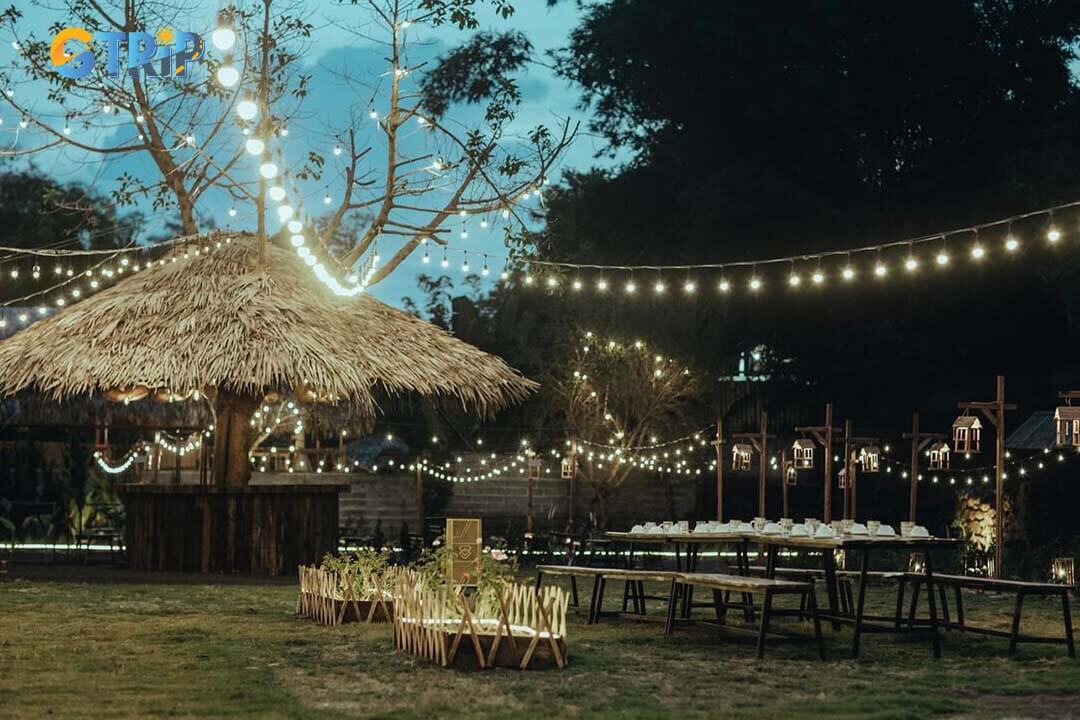
Dau Nguon Eco-Tourism Area offers lush forests, clear streams, and a peaceful retreat for nature lovers
Buon Ma Thuot Market
Buon Ma Thuot Market is the city’s largest and busiest marketplace, offering a vibrant glimpse into local life. Divided into sections, it features fresh produce, spices, dried goods, and traditional Ede textiles. Food lovers can savor local dishes like steamed rice rolls with grilled pork and beef noodle soup, showcasing the region’s unique flavors.
A highlight is the handicraft section, where Ede artisans sell intricately woven fabrics, handwoven baskets, and wooden carvings. Beyond shopping, the market offers a chance to engage with friendly vendors, learn about local customs, and support artisans and farmers. It’s a must-visit for an authentic Buon Ma Thuot experience.
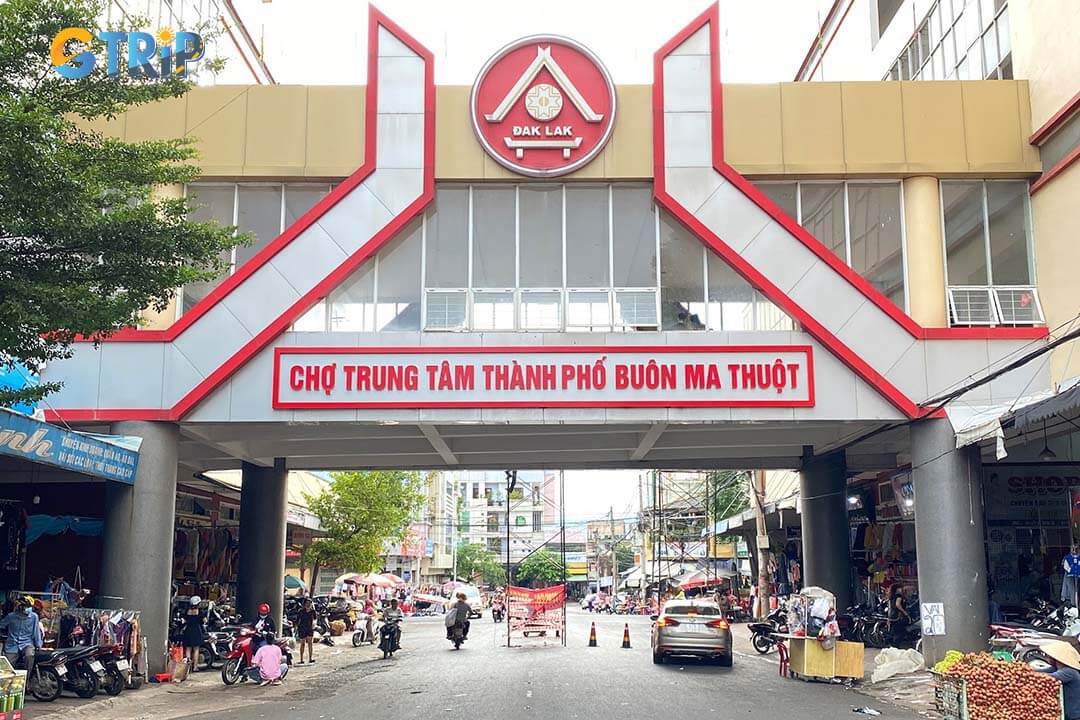
Buon Ma Thuot Market is a bustling hub of local life, offering fresh produce, traditional crafts, and authentic Central Highlands cuisine
Dak Lak Museum
Located in Buon Ma Thuot City, Dak Lak Museum is the largest cultural museum in the Central Highlands, dedicated to preserving and showcasing the region’s rich heritage. Housed in a striking building inspired by the Ede long stilt house, the museum seamlessly blends traditional architecture with modern design.
The museum is divided into 3 main sections: Ethnic Culture, Biodiversity, and History. The Ethnic Culture section highlights the traditions of the Ede, M’nong, and other indigenous groups through displays of traditional costumes, tools, handwoven textiles, and ceremonial gongs. The Biodiversity section explores the diverse ecosystem of Dak Lak, featuring preserved wildlife specimens and information on the region’s forests, rivers, and endangered species. The History section chronicles Dak Lak’s past, from early settlements to significant events like the Buon Ma Thuot Campaign, a turning point in Vietnam’s reunification.
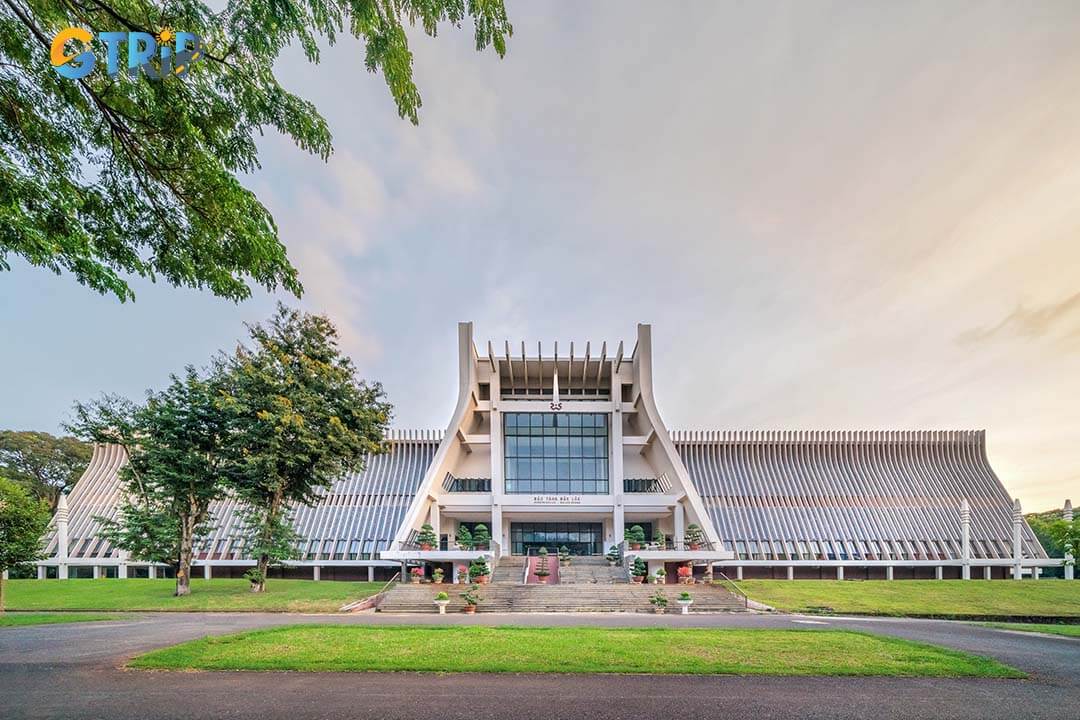
Dak Lak Museum, the largest in the Central Highlands, showcases the region’s ethnic culture, biodiversity, and history in a striking Ede-inspired building
Essential travel tips for a meaningful visit
To make the most of your visit to Co Thon Village, it’s important to be mindful of local customs and the environment. Engaging respectfully with the Ede community and preparing for the region’s climate will enhance your experience. Here are some essential tips to ensure a meaningful and responsible trip.
- Hire a local guide - Gain deeper cultural insights with a guide (costs around 200,000 - 300,000 VND per tour (~$8 - $12).
- Learn basic ede greetings - Simple words like “A rêi” (Hello) and “Kơ mloh” (Thank you) show respect.
- Respect local customs - Observe traditions, such as removing shoes before entering a longhouse.
- Dress appropriately - Wear light, breathable clothing and comfortable walking shoes.
- Stay hydrated - Carry a reusable water bottle to cope with the warm Central Highlands climate.
- Bring thoughtful gifts - School supplies (not money or candy) are welcomed when given through community leaders.
- Be mindful of photography - Ask for permission before taking photos, especially of people or sacred sites.
- Respect wildlife and nature - Avoid disturbing animals, littering, or damaging plants while exploring the surroundings.
- Minimize plastic waste - Bring a reusable bag and avoid single-use plastics to respect the environment.

Enhance your visit to Co Thon Village by respecting Ede customs, hiring a local guide, dressing appropriately, and minimizing environmental impact
Following these tips ensures a respectful, enjoyable, and culturally enriching experience at Co Thon Village. By being mindful of traditions and the environment, you also contribute to preserving the village’s unique heritage for future generations.
FAQs when visiting Co Thon Village
Co Thon Village, also known as Ako Dhong, is a preserved Ede ethnic village in Buon Ma Thuoc. It has gained attention for its traditional long stilt houses, matriarchal customs, and commitment to eco-tourism. Below are the most frequently asked questions about Co Thon Village, providing practical insights for visitors.
Can tourists stay overnight in Co Thon Village?
Co Thon Village lacks large hotels but offers immersive homestays in traditional Ede long stilt houses. Guests can experience communal living, enjoy home-cooked meals, and take part in cultural activities like storytelling and gong performances. These simple accommodations prioritize cultural authenticity over modern comforts.
For more amenities, Buon Ma Thuot City, just 2 km away, offers hotels like Dakruco and Sai Gon-Ban Me, as well as cozy coffee-themed homestays. Since not all Ede families host tourists, booking through local guides or tourism offices ensures a respectful and authentic stay.
Is Co Thon Village Suitable for Family Travel?
Co Thon Village is perfect for families seeking culture, nature, and hands-on experiences. Its peaceful setting, lack of heavy traffic, and shaded paths make it safe for children to explore. Traditional Ede stilt houses offer a unique glimpse into communal living and matriarchal customs.
Kids can enjoy interactive learning through traditional weaving, gong performances, and bamboo music. Coffee farm visits add an enriching touch, letting parents savor Dak Lak’s famous coffee while children discover the farming process.
How does Co Thon Village support eco-tourism?
Co Thon Village embraces eco-tourism by integrating sustainable practices that benefit both the environment and the community. Traditional Ede stilt houses, made from natural materials, minimize environmental impact while providing natural cooling.
Tourism is community-led, with locals organizing cultural tours and weaving workshops, ensuring income stays within the village. Visitors are also encouraged to reduce waste and limit plastic use to support conservation efforts.
Co Thon Village stands as a living testament to the rich cultural heritage of the Ede people, offering an immersive experience in Indigenous traditions, sustainable architecture, and eco-conscious tourism. This guide has provided insights into its unique lifestyle, ethical travel practices, and must-try local flavors, allowing you to explore the village with greater appreciation and cultural sensitivity.
Co Thon Village showcases Ede heritage through Indigenous traditions, sustainable architecture, and eco-tourism. To enrich your journey, consider learning more about Dak Lak’s coffee culture or the best eco-tourism spots in Vietnam - you’ll find these experiences complement your visit perfectly. For a well-planned itinerary, GTrip - Vietnam Travel Agency offers expert DakLak tours that highlight the region’s cultural and natural wonders. You can also explore tours in Vietnam to discover more breathtaking destinations across the country.

